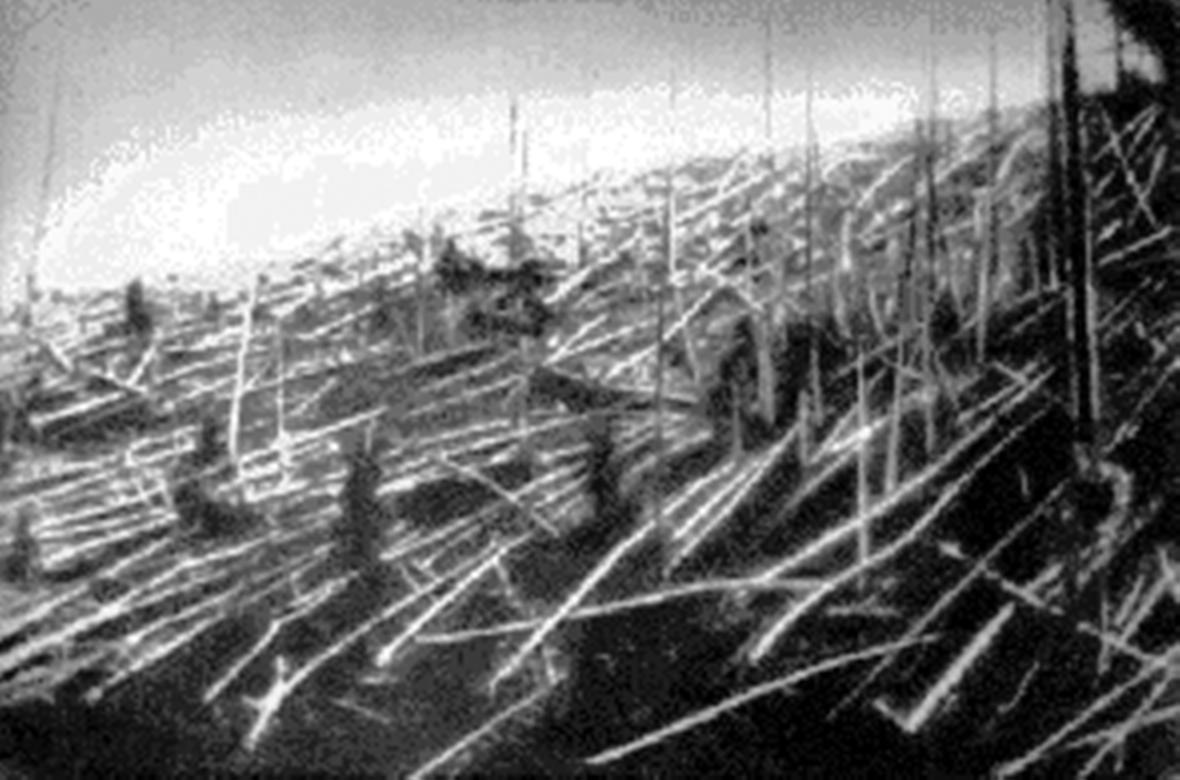
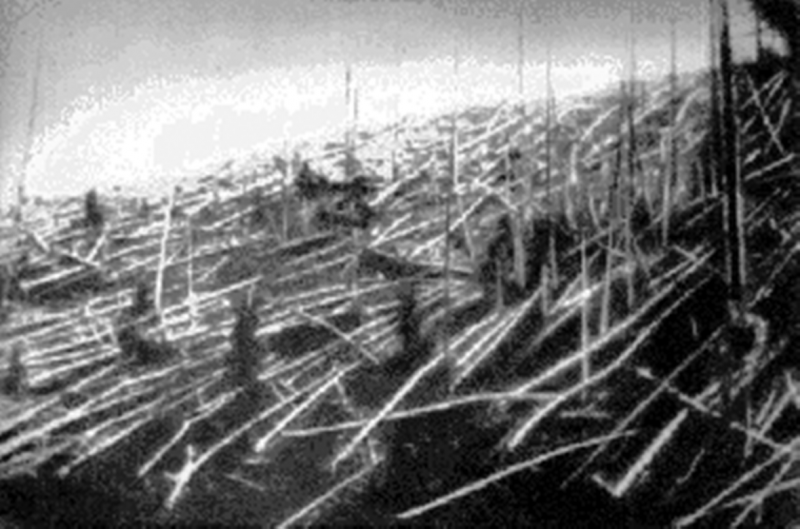
Photo from the Soviet Academy of Science 1927 expedition, led by Leonid Kulik, showing trees knocked over by the Tunguska blast in 1908. Image via Wikipedia.
On the morning of June 30, 1908, the largest asteroid impact in recorded history occurred in a remote part of Siberia, Russia. The explosion happened over the sparsely populated Eastern Siberian taiga, above Siberia’s Podkamennaya Tunguska River in what is now Krasnoyarsk Krai. The blast flattened an estimated 80 million trees over an area of 830 square miles (2,150 square km) of forest. We now celebrate Asteroid Day each year on the anniversary of what is now known as the Tunguska event.
Witnesses reported seeing a fireball – a bluish light, nearly as bright as the sun – moving across the sky, followed by a flash and a sound similar to artillery fire. Along with the sound was a powerful shockwave that broke windows hundreds of miles away and knocked people off their feet. The explosion in the sky was like nothing ever seen before.
Even though there was no crater found, it is still categorized as an impact event, and is believed to have been caused by an incoming asteroid (or comet), which never actually struck Earth but instead exploded in the atmosphere, causing what is known as an air burst, three to six miles (five to ten km) above Earth’s surface. Even though the asteroid didn’t hit the Earth per se, the atmospheric explosion was still enough to cause massive damage to the forest in the region. Recent research shows that the object was most likely a stony asteroid the size of a five-story building that broke apart about 15 miles (24 km) above the ground. It is estimated the asteroid entered Earth’s atmosphere traveling at a speed of about 33,500 miles (54,000 km) per hour.
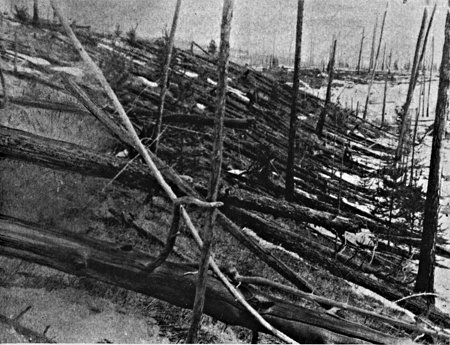
Another view of fallen trees at Tunguska in Siberia, in 1929. It wasn’t until 1927 that Russian scientists – led by Leonid Kulik – were finally able to get to the scene. Photo via the Soviet Academy of Science/ NASA Science.
The explosion released enough energy to kill reindeer and flatten trees for many miles around the blast site. At the time, it was difficult to reach this remote part of Siberia. It wasn’t until 1927 that Leonid Kulik led the first Soviet research expedition to investigate the Tunguska event. He made a initial trip to the region, interviewed local witnesses and explored the region where the trees had been felled. He became convinced that they were all turned with their roots to the center. He did not find any meteorite fragments, and he did not find a meteorite crater.
So what happened? Over the years, scientists and others concocted fabulous explanations for the Tunguska explosion. Some were pretty wild, such as the encounter of Earth with a stricken alien spacecraft, or a mini-black-hole, or a particle of antimatter.
But the truth is rather more ordinary. It is now thought that, in all likelihood, a small icy comet or stony asteroid collided with Earth’s atmosphere. If it were an asteroid, it might have been about a third as big as a football field – moving at about 10 miles (15 km) per second.
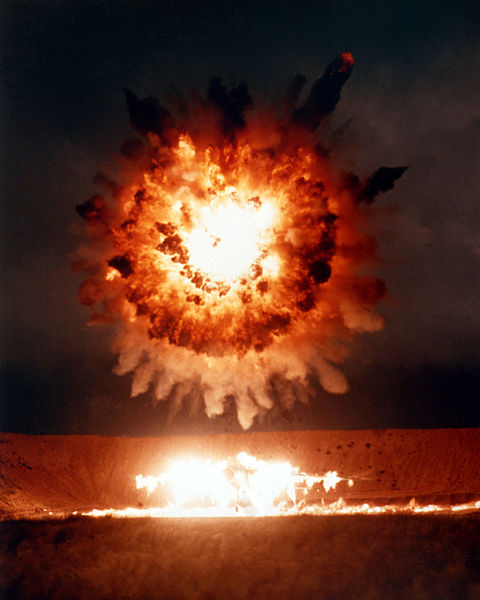
Photo of an air burst, in this case from a U.S. Navy submarine-launched Tomahawk cruise missile. A similar kind of air burst from an incoming asteroid or comet is thought to have flattened the trees in Siberia in 1908. Image via Wikimedia Commons.
In 2019, new research – inspired by a workshop held at NASA’s Ames Research Center in Silicon Valley and sponsored by the NASA Planetary Defense Coordination Office – was published about the Tunguska event, in a series of papers in a special issue of the journal Icarus. The theme of the workshop was reexamining the astronomical cold case of the 1908 Tunguska impact event.
Some vital clues as to what happened during the Tunguska event appeared on February 15, 2013, when a smaller but still impressive meteor burst in the atmosphere near Chelyabinsk, Russia. As NASA explained:
New evidence to help solve the mystery of Tunguska had arrived. This highly documented fireball created an opportunity for researchers to apply modern computer modeling techniques to explain what was seen, heard and felt.
The models were used with video observations of the fireball and maps of the damage on the ground to reconstruct the original size, motion and speed of the Chelyabinsk object. The resulting interpretation is that Chelyabinsk was most likely a stony asteroid the size of a five-story building that broke apart 15 miles above the ground. This generated a shock wave equivalent to a 550-kiloton explosion. The explosion’s shockwave blew out roughly a million windows and injured more than a thousand people. Fortunately, the force of the explosion was not enough to knock down trees or structures.
Per current understanding of the asteroid population, an object like the Chelyabinsk meteor can impact the Earth every 10 to 100 years on average.
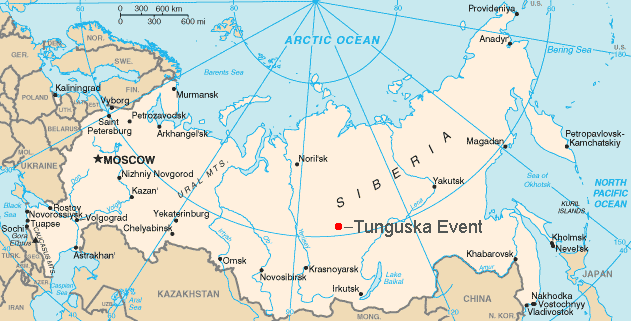
Map showing the approximate location of the Tunguska event of 1908 in Siberia, Russia. Image via Wikipedia.
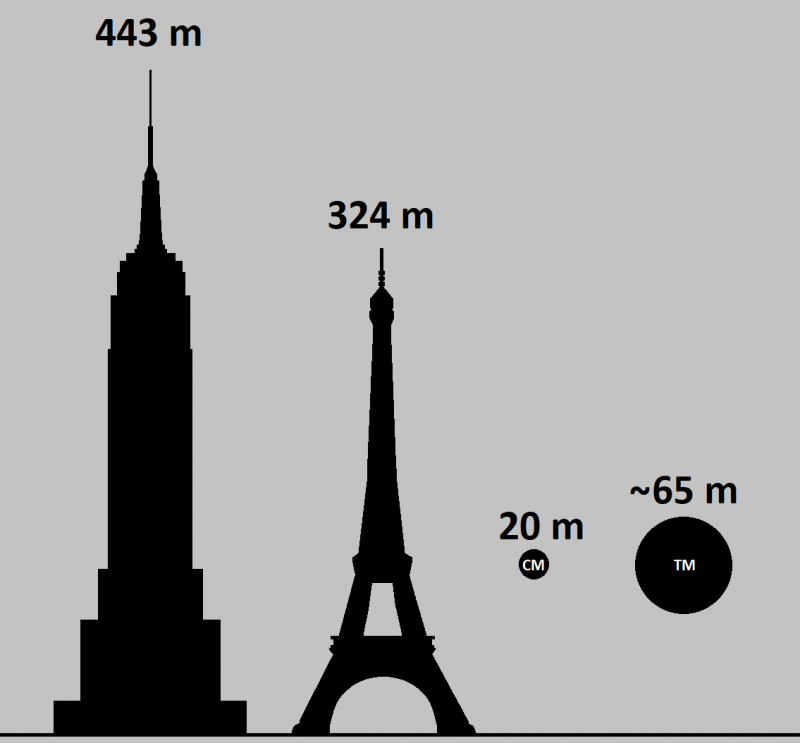
Approximate size comparison of the asteroids/meteorites that exploded over Tunguska and Chelyabinsk, in relation to the Empire State Building and the Eiffel Tower. Image via Wikipedia.
Read more about NASA’s research on the Tunguska event
Due to the Tunguska event, and other, smaller impacts, astronomers have come to take the possibility of catastrophic comet and asteroid impacts more seriously in recent decades. They now have regular observing programs to watch for Near-Earth Objects, as they’re called. There are regular meetings to discuss what might happen if we did find a large object on a collision course with Earth. And space scientists are planning missions to an asteroid, including ESA’s Hera mission, due to launch to the Didymos pair of near-Earth asteroids in 2024, and NASA’s DART mission, also traveling to Didymos, which will launch sometime in late 2021.
Lorien Wheeler, a researcher at NASA Ames Research Center, working on NASA’s Asteroid Threat Assessment Project, said:
Because there are so few observed cases, a lot of uncertainty remains about how large asteroids break up in the atmosphere and how much damage they could cause on the ground. However, recent advancements in computational models, along with analyses of the Chelyabinsk and other meteor events, are helping to improve our understanding of these factors so that we can better evaluate potential asteroid threats in the future.
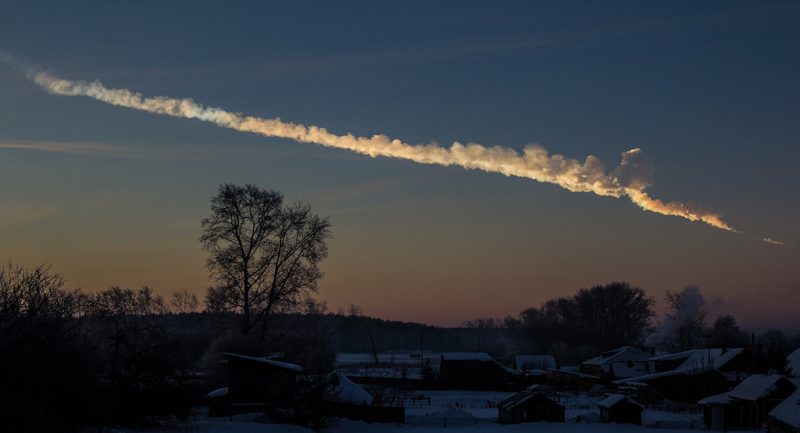
Smoke trail from the Chelyabinsk meteor, February 15, 2013. Image via Alex Alishevskikh, who caught it about a minute after the blast.
Astronomer David Morrison, also at NASA Ames Research Center, commented:
Tunguska is the largest cosmic impact witnessed by modern humans. It also is characteristic of the sort of impact we are likely to have to protect against in the future.
On February 15, 2013, a similar although smaller airburst occurred over the city of Chelyabinsk, Russia. In this case, the airburst was likely caused by a stony asteroid or meteorite the size of a five-story building that broke apart 15 miles (24 km) above the ground. The shockwave from the blast, equivalent to a 550 kiloton explosion, blew out roughly a million windows and injured more than a thousand people in six cities across Russia.
Bottom line: On June 30, 1908, an object from space, thought to be an asteroid, exploded above Siberia, Russia, in what has become known as the Tunguska event. The explosion flattened thousands of trees, killed reindeer and blew out windows hundreds of miles away.
Source: Icarus special papers on Tunguska
Source:
https://earthsky.org/space/what-is-the-tunguska-explosion